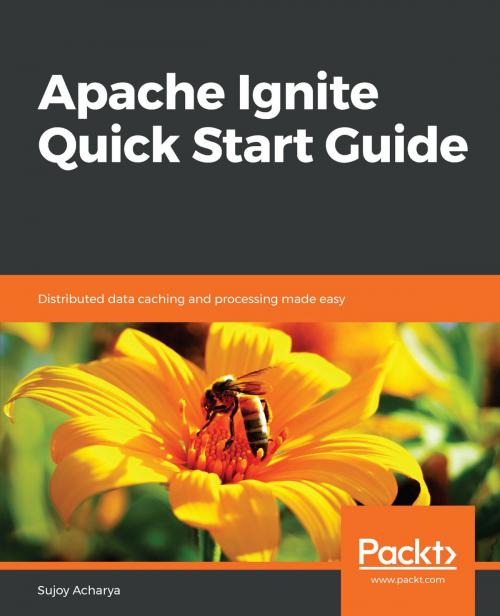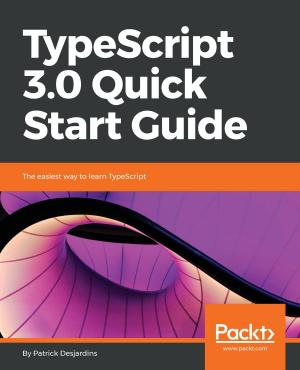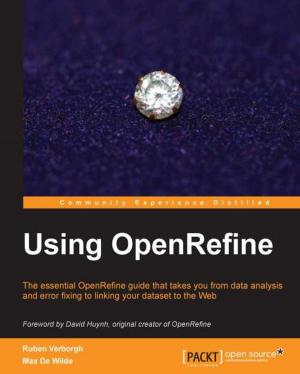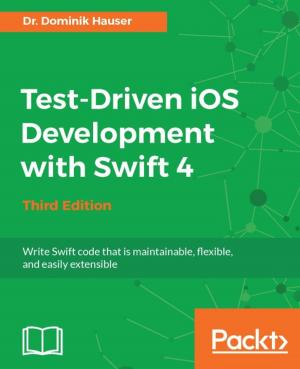Apache Ignite Quick Start Guide
Distributed data caching and processing made easy
Nonfiction, Computers, Database Management, Data Processing, General Computing| Author: | Sujoy Acharya | ISBN: | 9781789344066 |
| Publisher: | Packt Publishing | Publication: | November 30, 2018 |
| Imprint: | Packt Publishing | Language: | English |
| Author: | Sujoy Acharya |
| ISBN: | 9781789344066 |
| Publisher: | Packt Publishing |
| Publication: | November 30, 2018 |
| Imprint: | Packt Publishing |
| Language: | English |
Build efficient, high-performance & scalable systems to process large volumes of data with Apache Ignite
Key Features
- Understand Apache Ignite's in-memory technology
- Create High-Performance app components with Ignite
- Build a real-time data streaming and complex event processing system
Book Description
Apache Ignite is a distributed in-memory platform designed to scale and process large volume of data. It can be integrated with microservices as well as monolithic systems, and can be used as a scalable, highly available and performant deployment platform for microservices. This book will teach you to use Apache Ignite for building a high-performance, scalable, highly available system architecture with data integrity.
The book takes you through the basics of Apache Ignite and in-memory technologies. You will learn about installation and clustering Ignite nodes, caching topologies, and various caching strategies, such as cache aside, read and write through, and write behind. Next, you will delve into detailed aspects of Ignite’s data grid: web session clustering and querying data.
You will learn how to process large volumes of data using compute grid and Ignite’s map-reduce and executor service. You will learn about the memory architecture of Apache Ignite and monitoring memory and caches. You will use Ignite for complex event processing, event streaming, and the time-series predictions of opportunities and threats. Additionally, you will go through off-heap and on-heap caching, swapping, and native and Spring framework integration with Apache Ignite.
By the end of this book, you will be confident with all the features of Apache Ignite 2.x that can be used to build a high-performance system architecture.
What you will learn
- Use Apache Ignite’s data grid and implement web session clustering
- Gain high performance and linear scalability with in-memory distributed data processing
- Create a microservice on top of Apache Ignite that can scale and perform
- Perform ACID-compliant CRUD operations on an Ignite cache
- Retrieve data from Apache Ignite’s data grid using SQL, Scan and Lucene Text query
- Explore complex event processing concepts and event streaming
- Integrate your Ignite app with the Spring framework
Who this book is for
The book is for Big Data professionals who want to learn the essentials of Apache Ignite. Prior experience in Java is necessary.
Build efficient, high-performance & scalable systems to process large volumes of data with Apache Ignite
Key Features
- Understand Apache Ignite's in-memory technology
- Create High-Performance app components with Ignite
- Build a real-time data streaming and complex event processing system
Book Description
Apache Ignite is a distributed in-memory platform designed to scale and process large volume of data. It can be integrated with microservices as well as monolithic systems, and can be used as a scalable, highly available and performant deployment platform for microservices. This book will teach you to use Apache Ignite for building a high-performance, scalable, highly available system architecture with data integrity.
The book takes you through the basics of Apache Ignite and in-memory technologies. You will learn about installation and clustering Ignite nodes, caching topologies, and various caching strategies, such as cache aside, read and write through, and write behind. Next, you will delve into detailed aspects of Ignite’s data grid: web session clustering and querying data.
You will learn how to process large volumes of data using compute grid and Ignite’s map-reduce and executor service. You will learn about the memory architecture of Apache Ignite and monitoring memory and caches. You will use Ignite for complex event processing, event streaming, and the time-series predictions of opportunities and threats. Additionally, you will go through off-heap and on-heap caching, swapping, and native and Spring framework integration with Apache Ignite.
By the end of this book, you will be confident with all the features of Apache Ignite 2.x that can be used to build a high-performance system architecture.
What you will learn
- Use Apache Ignite’s data grid and implement web session clustering
- Gain high performance and linear scalability with in-memory distributed data processing
- Create a microservice on top of Apache Ignite that can scale and perform
- Perform ACID-compliant CRUD operations on an Ignite cache
- Retrieve data from Apache Ignite’s data grid using SQL, Scan and Lucene Text query
- Explore complex event processing concepts and event streaming
- Integrate your Ignite app with the Spring framework
Who this book is for
The book is for Big Data professionals who want to learn the essentials of Apache Ignite. Prior experience in Java is necessary.















